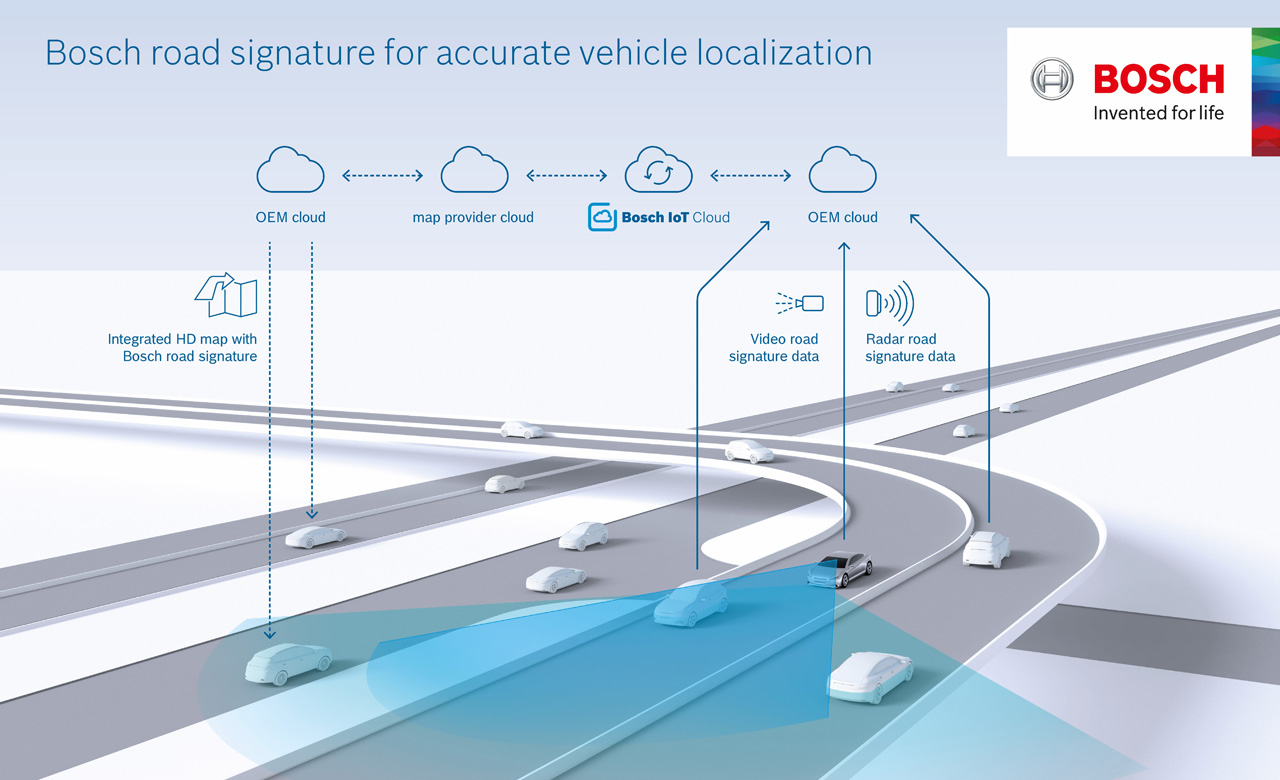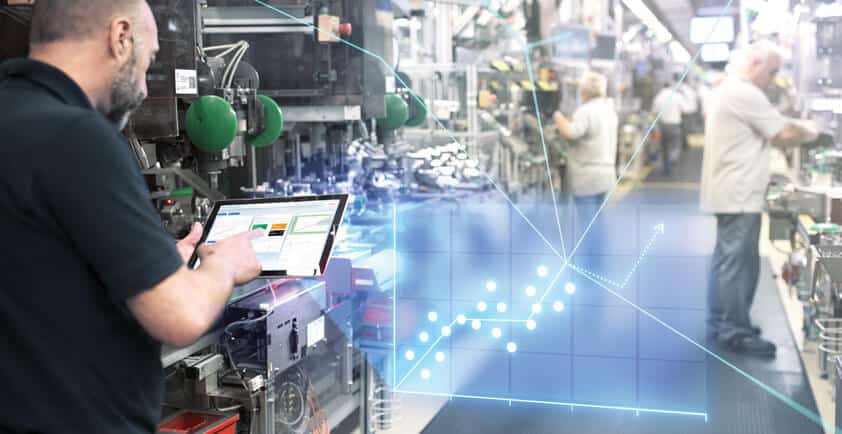

SWARM INTELLIGENCE FOR AUTOMATED DRIVING
Bosch and VW are harvesting real-time information for high resolution maps
>> Continuous updates: flow of information from real road traffic ensures map layers are always up to date
>> Highly accurate localization: comparing current surround sensor data with stored map information ensures precise localization
>> Improved road safety: adding map data to vehicle sensors helps make driver assistance systems more robust and convenient
>> Large fleet of vehicles: VW Golf 8s on Europe’s roads are helping create the Bosch road signature
Stuttgart, Germany – Is it possible to help automated driving achieve a breakthrough just by driving? Sure – at least for drivers behind the wheel of a VW Golf 8. As they drive along, these vehicles can provide information for the Bosch road signature. The cloud-based service uses real-world traffic data from sensors to provide multilayer high-resolution maps and keep them up to date. For driving that is becoming increasingly automated, this function is crucial. “We are pleased to be paving the way to tomorrow’s mobility today together with partners,” says Dr. Mathias Pillin, president of the Bosch Cross-Domain Computing Solutions division.
If cars are to drive on their own in the future, they will need highly accurate digital maps – and to know precisely where they are on those maps. This is exactly what the Bosch road signature offers: using information from radar and video sensors, as well as vehicle motion data, it augments common navigation maps with additional layers for vehicle localization and control. These additional layers are compatible with typical map formats. Data is currently being generated to set up the road signature. Starting in 2023, vehicles will feature the signature along with an initial number of services. Bosch plans to use current data to continuously expand the signature and keep it up to date. While the other map levels truly unfold their full potential especially in vehicles featuring Level 2 hands-free functions and higher, they also offer advantages at lower levels. “The more vehicles that provide information now and in the future, the larger and more robust the database will be for automated and assisted driving,” Pillin says.
Digital twin of the vehicle environment
VW is leading the way with the high-volume Golf 8 in Europe, with other vehicles to follow. Specifically, the solution works like this: while on the road, the vehicle fleet uses surround sensors to generate information about landmarks such as road signs, guardrails, curbs, and lane markings. The vehicles send the data completely anonymously via the VW cloud to the Bosch cloud. Furthermore, only the information that is required for the map layers is transmitted. The road signature is created in the Bosch cloud on this basis, producing a kind of digital twin of the real environment.
“ We are pleased to be paving the way to tomorrow’s mobility today together with partners”
Dr. Mathias Pillin, president of the Bosch Cross-Domain Computing Solutions division


Thanks to the Bosch road signature, vehicles can determine their position with a high degree of accuracy: in real time, each vehicle compares the information currently provided by its surround sensors with that of its digital twin. This comparison enables the cars to accurately determine their position in the lane down to a few decimeters relative to the highly accurate map. The use of radar means that localization works reliably even in adverse weather conditions such as fog, rain, and snow – conditions which make it difficult, if not impossible, for a camera to perceive its surroundings.
Natural driving behavior of automated vehicles
In addition, the road signature enables safer and more convenient lateral and longitudinal guidance of automated vehicles, as it contains information not only about landmarks, but also about road geometry, lane layout, road signs, and speed limits. It even includes typical driving behavior at specific locations: for instance, how do human drivers approach a curve? When do they step on the brakes before an intersection? What do they do when they change lanes prior to making a turn? To answer such questions, the service uses motion data such as speed, steering angle, and wheel speed. In the future, the road signature will provide vehicles with this information – and thus help make automated driving an experience that is as natural, comfortable, and safe as possible. Bosch and VW are moving closer to this goal with every kilometer driven.













